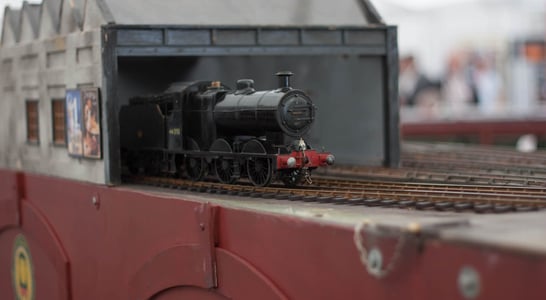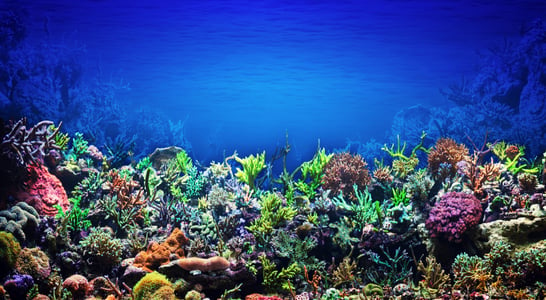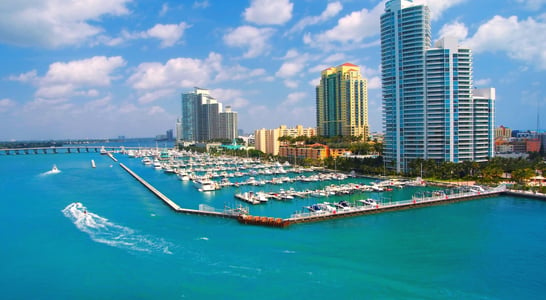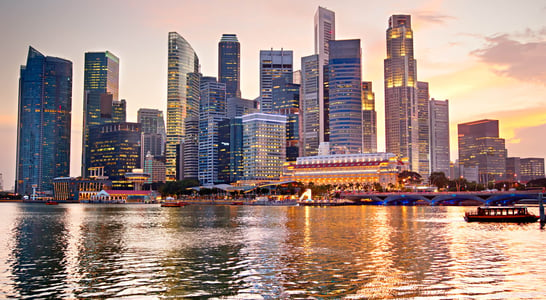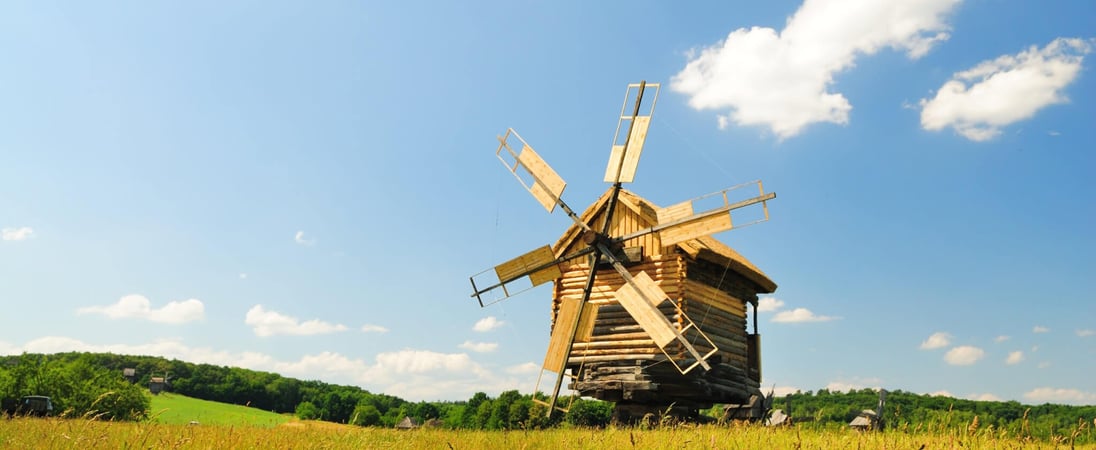
National Windmill Day
Drive out to windmill country, or read up about the history of windmills and how they can provide clean, sustainable energy by harnessing Earth’s natural power.
Most people love them because there’s something absolutely bucolic about their squat structures and the gentle creak of their fins as these wooden structures spin in the natural wind currents. Of course, that describes the old fashioned kind of windmill. The newer, modern versions take on some different characteristics, of course.
Windmills have been around for a very long time, since the time when people first realized it was possible to harness the power of the wind to perform work and provide energy. Ever since new innovations have been made with the ability to utilize the never-ending source of power that windmills capture.
National Windmill Day commemorates the origins of the windmill as well as how it has helped to shape technology and industry from the past and into the future. It’s time to learn about and celebrate National Windmill Day!
How to Celebrate National Windmill Day
Learn More About Windmills
Well perhaps to first thing to do is start by reading up on the topic of windmills. One of the best things that can be done to celebrate the day is to get more educated on the history of windmills, to begin learning how they’re helping us today, and even to share that information with others. As one of the fastest growing sources of energy in the world, it’s worth learning more about!
Here are some interesting facts about windmills to get started:
-
The first modern version of the wind turbine was built in Vermont, USA in the 1940s. Its success was not long lived due to war shortages and the next time a windmill would rival it in size would be in 1979.
-
Hawaii, USA hosts the world’s largest wind turbine, which is the height of a 20 story building and its blades are the length of a football field.
-
Offshore wind is particularly effective. In Europe, one offshore wind turbine (located in the water) can power more than 1500 homes.
Read Don Quixote
Famous (or perhaps, infamous) for his mistake in thinking that windmills are giant monsters, Don Quixote bravely rides toward them to do battle and, of course, eventually gets knocked off his horse. This is just one of the many beloved and memorable scenes in this classic novel by Spanish author, Miquel de Cervantes, published in 1606.
Visit Holland for National Windmill Day
While not necessarily the first place to house windmills, Holland (now known as The Netherlands) has a long history with them as they were the first place to use them to move water from low lying lands.
In fact, the second Saturday and Sunday in May (because one day just isn’t enough!) are celebrated in Holland as “National Mill Day”, which is called Molendag in Dutch. This is a day when 950 windmills and watermills will open their doors to the public for visitors to see their inner workings first hand and learn more about them. Plus, many of them will also host fun events for the local community and tourists alike.
Whether in Amsterdam or throughout the rest of this country filled with canals and waterways, the windmills are stunning. It’s even possible to go on a bike tour of the mills to visit some of the most beautiful, iconic and picturesque mills in the world!
Those who find other countries in Europe to be more accessible can celebrate National Windmill Day in the United Kingdom, Germany, Switzerland and other countries, where it is often referred to as National Mills Day.
Watch Some Windmills
For those who happen to live in an area that has a single windmill or a whole windmill farm, it might be fun and interesting to go out and watch them turn.
More and more communities are dotting them about the landscape as a sustainable source of power. As you gaze upon and contemplate just how important these are to a bright, pollution-free future for our children, enjoy watching their soothing motion and consider their history too.
History of National Windmill Day
The idea of capturing the power of the wind to perform work isn’t new and, in fact, it goes back far further into history than most people would suspect. Since then, its use has sprung up in multiple cultures throughout the world.
Heron of Alexandria, who lived in the first century AD, was the earliest person known to have harnessed the energy of moving air to perform work, using a very primitive device to power, of all things, a musical instrument: the organ. The people of Persia also developed more traditional windmills, though they had a different orientation than the ones most people typically think of when hearing the word ‘windmill’.
Some historians think that the Persian models were the inspiration for the vertical models that were developed later on in the middle ages. The evidence of one of the oldest windmills that remains today can be found in Weedley, Yorkshire, England and is said to have been built in 1185. As is commonly depicted in media, these machines were used primarily to grind grain, and have been for many centuries since that time.
Recently though, at least in the last 150 years or so, there’s been a growing movement to use windmills in another fashion entirely. The power of the wind can be harnessed to turn giant wind turbines which in turn generate clean, and virtually unlimited, renewable energy.
Windmills have been around for a long long time, and while they may seem like primitive tech, they’ve moved into the world as hope for a clean future. Along with solar, bio-fuel, and fuel cells, windmills are working to save the environment.
National Windmill Day Timeline
644 AD
First reference to windmills
Beginning as horizontal mills with woven reed blades that radiate from a vertical axis, these first windmills are built in Persia.[1]
11th Century AD
Windmills are used for food production
In the Middle East, windmills are used to help produce food and the ideas are then taken to Europe by merchants and crusaders.[2]
1300s
Windmills are used to drain water
The Dutch people of the Netherlands realize that the water from their low-lying areas can be drained using windmills.[3]
1600s
Windmills are introduced to the New World
When the Dutch colonize New Amsterdam (now called New York City), they bring their windmill designs with them[4]
1887
First large scale power generating wind turbine
Charles F. Brush builds a huge 60-foot windmill with a whopping 144 blades in Cleveland, Ohio.[5]
National Windmill Day FAQs
How do windmills work?
Wind turbines use their large blades to collect kinetic energy as the wind flows over the blades to create “lift”.[1]
Do windmills make noise?
Windmills do emit a characteristic noise, mainly generated by the movement of the blades, but the noise is generally weak.[2]
Are windmills renewable energy?
Wind is an emissions-free source of energy that has fewer effects on the environment than many other energy sources.[3]
Do windmills create electricity?
Yes! Wind turns the propellers of the windmill around a rotor that, in turn, spins a generator to create electricity.[4]
How much do windmills cost?
The standard windmill costs around $2-4 million with another $40-50,000 in per year in operation and maintenance.[5]
Also on ...
View all holidaysWorld Fair Trade Day
Make conscientious shopping choices and research which companies use child labor, unsafe practices, and more to cut corners, so you can avoid them.
National Train Day
Go out and take a ride on a train, or watch them go by from a comfortable vantage point, whether fast, sleek commuter trains or large, loud steam engine transporters.
Mother Ocean Day
Pay homage to the incredible force of nature that is the ocean, which houses over a million different species, many of which are endangered or threatened.
World Lupus Day
Learn the symptoms so you can act fast against the life-threatening autoimmune disease known as Lupus, which effects at least five million people globally.
We think you may also like...
Skyscraper Appreciation Day
Take a trip to the grandest skyscraper in your area and appreciate the architectural marvel, or appreciate an entire skyline from just outside a city.
National Skyscraper Day
Enjoy the architectural marvels that are skyscrapers by visiting such buildings or finding a spot from which to view a whole city skyline at once.
World Architecture Day
Take a tour of some of your local works of interesting architecture, from skyscrapers to modern homes, and learn about famous architects like Frank Lloyd Wright.
National Library Week
Silent realms of knowledge, these havens harbor stories and wisdom, inviting exploration beyond the whispers of time.

